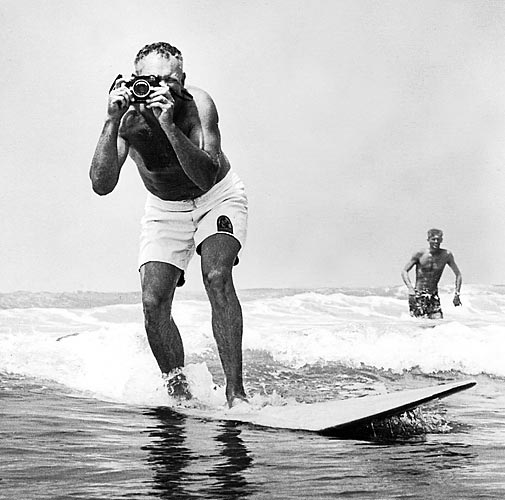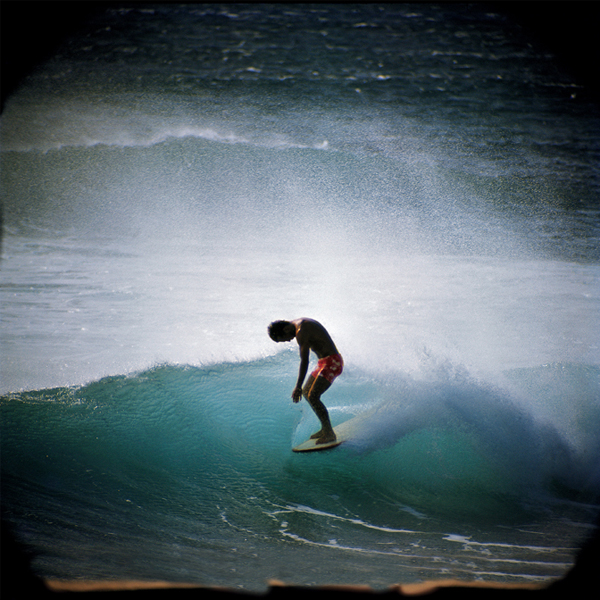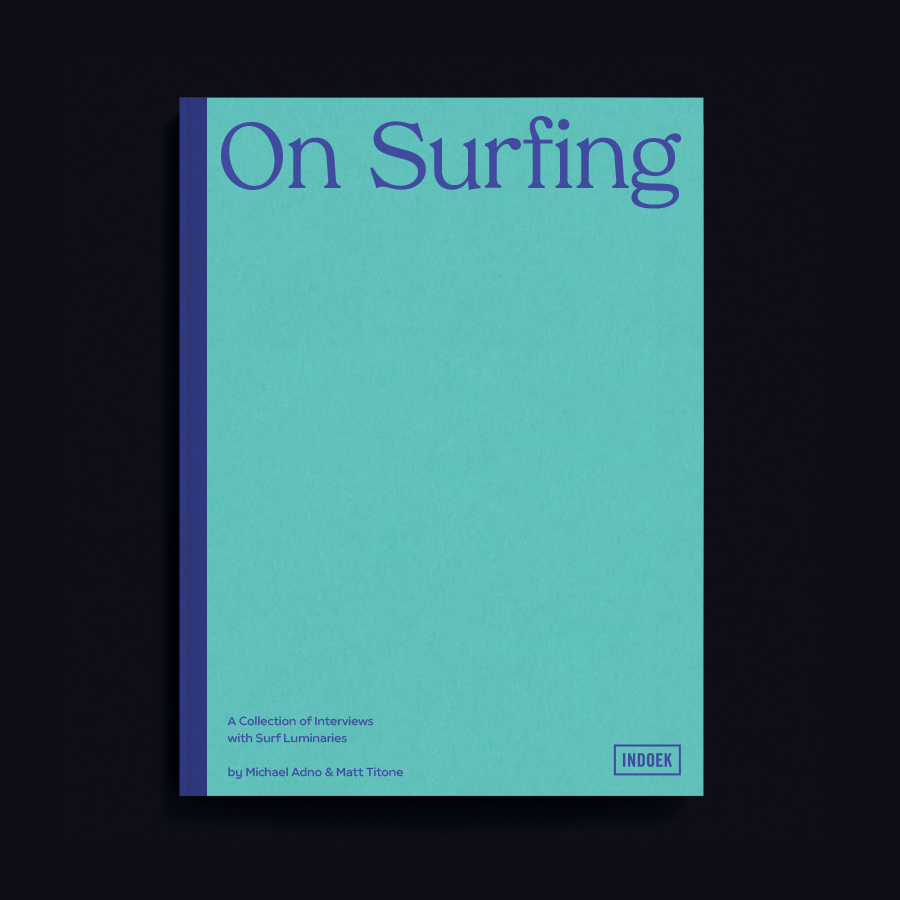

Leroy Grannis passed away on Thursday, February 3rd at a Torrance nursing facility. He was 93. Often called ‘the Godfather of surf photography’, Grannis was best known for his depiction of the burgeoning sport of surfing in Southern California and Oahu’s North Shore through the 1960s and early ’70s.
Leroy Grannis wasn’t the first to depict the California lifestyle with his photos. It wasn’t his idea to begin shooting in the first place. His contributions to surfing photography occurred over a brief 12-year period, and he hadn’t much bothered with it since 1971. Nevertheless, most of the great images from the ’60s golden age of surfing, regardless of the magazine, bear the inscription “Photo: Grannis.”
Hermosa Beach welcomed Leroy Grannis into this world. Living mere steps from the ocean, his father would take him swimming and bodysurfing by age five. Soon, Grannis fashioned a bellyboard from a hunk of wood and rode it during vacations in his mother’s home state of Florida. In 1931, he procured a 6′ x 2′ slab of pine and hacked out a kneeboard. At Hermosa Pier, stand up surfing was the rage, so he began borrowing boards until he could get his own. A member of the Palos Verdes Surf Club, the first of its kind in America, he struggled to balance surf time with family and work.
Unable to afford an education at UCLA during the Depression, Grannis dropped out and found work as a carpenter, junkyard de-tinner and spent some years at Standard Oil. He enlisted in the Air Force in 1943, remaining on active reserve until retiring as a major in 1977. Several fellow surf club members were employed with Pacific Bell Telephone, and Grannis joined them in 1946. He surfed the occasional contest during the ’50s, gradually settling into the role of assisting Hoppy Swarts at the controls during the early years of the United States Surfing Association. The telephone company position had given him an ulcer by 1959 and the doctor advised taking up a hobby. Photo pioneer Doc Ball was a close friend and suggested he try photography. Grannis was featured in Ball’s 1946 book California Surfriders.
Grannis’ first published photos appeared in Reef Magazine in 1960. Other photographers were shooting from the water, but they were forced to return to land to reload. Grannis developed a rubber-lined box that enabled him to change film in the lineup. He spent the decade between California and Hawaii, capturing the best surfers in the world riding the best surf. He helped start Surfing Illustrated in 1962 and contributed to every other major surf publication of the time. By 1964, he worked exclusively with International Surfing, and it eventually dropped the “International” tag.
In 1971, fed up with increased competition for the perfect angle, Grannis quit shooting surfing and soon found himself involved in hang gliding. The sport replaced surfing in his life, and he held a brief stint as photographer for Hang Gliding magazine. Several injuries, including a badly fractured leg in 1981, caused him to find a new outlet. This time it was windsurfing. Until the late ’80s, Grannis both engaged in and photographed the sport.
A hardbound book of his 1960’s photos, entitled Photo: Grannis, was published in 1998 by The Surfer’s Journal.
He caught his last wave in 2001.
Katie, his wife of 69 years, died in 2008.
Besides his son John of Hermosa Beach, Grannis is survived by three other children, Nancy of Sonora, Calif.; Kit of Carlsbad; and Frank of Burien, WA.; six grandchildren, three great-grandchildren and one great-great-granddaughter.
A paddle-out memorial is being planned for Palos Verdes Cove in June.
(via Surfline.com)
www.surfline.com



